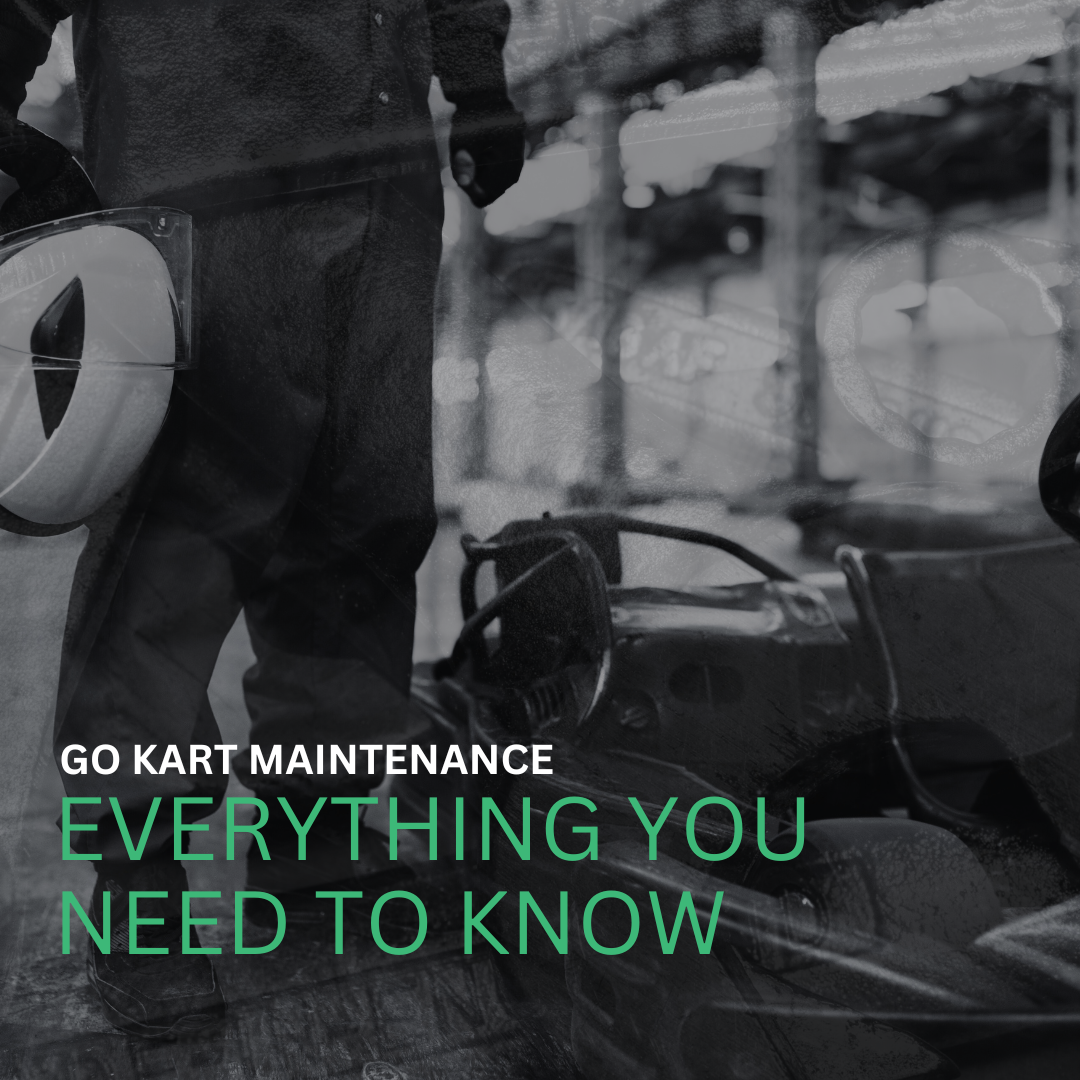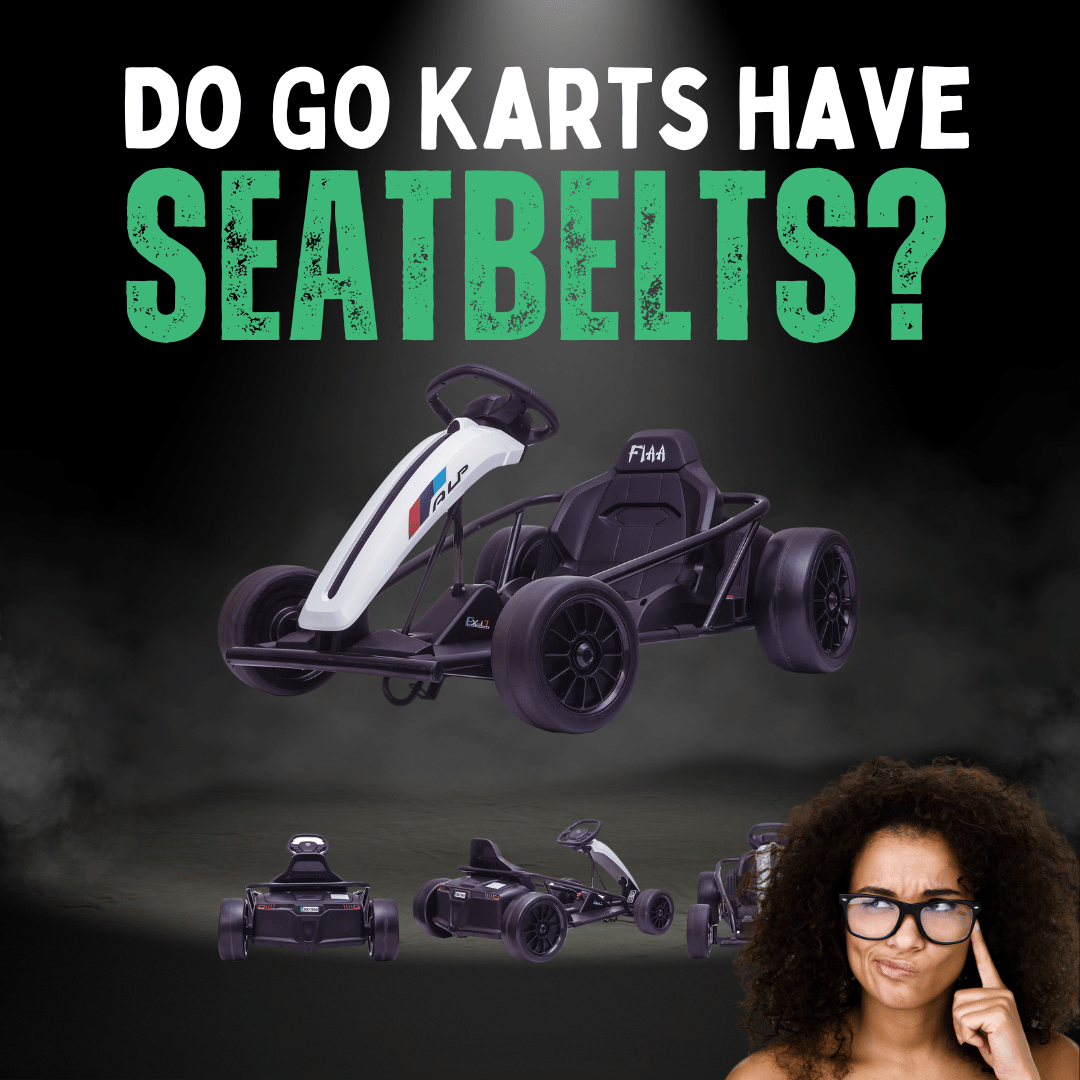
Updated: 20.05.25
Do go-karts have seat belts? It’s a common question among racing enthusiasts. The answer depends on the type of go-kart and its intended use.
From recreational go-karts to professional racing models, seat belt usage varies based on safety needs and design.
1. Do Go-Karts Have Seat Belts?
Seat belts in go-karts vary by type. Recreational and off-road go-karts often include them for safety, while professional racing karts typically omit them, as ejection is considered safer in high-speed crashes.
2. Types of Go-Karts and Seat Belt Usage
Different go-kart types have unique safety requirements:
| Type of Go-Kart | Seat Belts | Usage |
|---|---|---|
| Recreational Go-Karts | Yes | Family fun centres, amusement parks, for novices and kids. |
| Concession Go-Karts | Yes | Rental karts at funfairs or amusement parks. |
| Off-Road Go-Karts | Yes | Unpredictable terrain, higher risk of tipping. |
| DIY Go-Karts | Varies | Depends on builder’s safety preferences. |
| Professional Go-Karts | No | Designed for speed; ejection safer in crashes. |
Recreational Go-Karts
Used at family fun centres, these karts prioritise safety with seat belts, ideal for novices and kids. See our kids’ go-kart safety tips.

Concession Go-Karts
Rental karts at amusement parks include seat belts for safety in controlled environments.
Off-Road Go-Karts
Designed for rough terrain, off-road karts use seat belts to prevent injury during flips. Learn about go-kart flipping risks.
DIY Go-Karts
Seat belt inclusion depends on the builder’s design, balancing safety and customisation.
Professional Go-Karts
These karts often lack seat belts, as racers prioritise quick escape in crashes. Explore how go-karts work.

3. Safety in Go-Karting
Safety is critical in go-karting, encompassing helmets, protective gear, and seat belt decisions. Check our go-kart maintenance guide for more.

Role of Seat Belts
In recreational and off-road karts, seat belts secure drivers during sudden stops or collisions, enhancing safety.
Debating Seat Belt Use
Some argue seat belts pose risks in severe crashes, like trapping drivers in fires or flips, especially in professional racing.
4. Pros and Cons of Seat Belts
- Pros: Prevent injuries from minor crashes or sudden stops, ideal for off-road and recreational karts.
- Cons: May trap drivers in severe accidents, like fires or flips, particularly in professional karts.
5. Legal Requirements
UK regulations, guided by the Health and Safety Executive (HSE), often mandate seat belts for recreational and concession karts. Off-road and DIY karts may have fewer requirements, but always check local laws.
6. Types of Seat Belts
Seat belts vary by go-kart type:
| Type of Seat Belt | Description | Typical Use |
|---|---|---|
| Lap Belts | Simple belt over the lap for basic restraint. | Recreational go-karts, family fun centres. |
| Harnesses | Shoulder straps for added support. | Off-road go-karts, high-risk environments. |
| Safety Restraint Systems | Complex systems for maximum security. | Professional racing karts. |
Frequently Asked Questions
Do all go-karts have seat belts?
No, recreational and off-road go-karts typically have seat belts, while professional racing karts often do not for safety in high-speed crashes.
What other safety gear is needed for go-karting?
Essential gear includes a helmet, neck brace, rib protector, race suit, gloves, balaclava, and proper shoes for safety and control.
Are seat belts mandatory for go-karts in the UK?
UK HSE guidelines often require seat belts for recreational and concession karts, but regulations vary for off-road and DIY karts.
What type of seat belt is best for go-karts?
Lap belts suit recreational karts, while harnesses are ideal for off-road karts. Ensure quick-release designs for safety.
Can seat belts be added to a go-kart?
Yes, seat belts can be retrofitted to DIY or off-road karts, but ensure proper installation for safety and compliance.
Get in Touch
Curious about go-kart safety or choosing the right ride-on toy? Visit RiiRoo.com or join our Live Chat for expert advice!





Share:
Can You Ride A Motorcycle In The Rain?
Do Go Karts Have Power Steering?